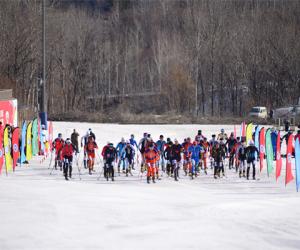The History Recorded in the Inscription on the Demo Stone Board
Nyingchi County, named in ancient times as Gongbo, has a long history that can be traced to Tibet's prehistoric period. In the 1970s, human bones and a tomb group from the Neolithic period were unearthed near the Nyang River. Archeological studies show that, as early as over 4,000 years ago, what is now the Nyingchi area was a settlement of humans who farmed by the slash-and-burn method and were relatively settled. The weights of fishnets and arrowheads among the unearthed relics suggest that these people engaged in fishery as well as agriculture by the Nyang and Yarlung Zangbo rivers, and the ancient lakes in their valleys, which are now dry. Archeologists' research identified these people as a clan of a large tribe or a tribal alliance, and called them Nyingchi Man, whose culture was one representative of southeastern Tibet.
The earliest record of the history of Nyingchi can be found in the inscription on the Demo Stone Board in Gongbo, which is near Guanqug Yumzoinzin of the Moinri area in Nyingchi County, facing southwest. With a 1,200-year history, the inscription is still clear. The history it records is as follows:
The first chieftain of the Yarlung Tribe, Nyitri Tsampo, came from Bome to the Qamtog Mountain in Gongbo, where he became the chieftain of Yarlung. The seven successive chieftains of Yarlung all lived in the Qenwa Dagze Palace. Around the first century AD, the seventh chieftain Zhigung Tsampo was killed during power struggles among the tribe leaders. His sons, Nyitri and Shatri, fled to Gongbo. Later Shatri, the younger, returned to Yarlung and became its eighth chieftain, Bodgungyi, while Nyitri stayed in Gongbo and became the king of the people there. The hereditary succession to the throne began with him. The inscription says: "The royal family of Gongbo started from a prince" and "no one but descendants of the king of Gongbo shall succeed to the throne." This record was originally a treaty of alliance bestowed by the Tibetan king Tride Songtsan (?-815) to the king of Gongbo in the eighth century, and was inscribed on a slab to be commemorated. The king of Gongbo ruled over the area for many years since then. In the Sagya and Pagmo Zhuba regimes (13th to 16th century), the Nyingchi area became the sphere of influence of the Garma Gagyu Sect of Tibetan Buddhism. In the 17th century, when the Gandain Phodrang regime was founded, Nyingchi was divided by several local chieftains such as Ngapoi, Gyangzoin and Gyailha, and later redivided into Zelha, Jormo, Xoika and Gyainda. Bome remained under the predomination of Garnam Deba, a local chieftain, for a long time. In 1931, the Tibetan government divided Bome into Bodui and Bome clans, and Medog Prefecture was renamed Medog Clan. Tibet was liberated in 1951, and underwent a democratic reform in 1959. In January 1960, Tagung Prefectural Commissioner's Office was set up, and was renamed Nyingchi Prefectural Commissioner's Office in February 1960. In October 1963 was abolished and Bome County was incorporated into Qamdo Prefecture, while the four counties of Nyingchi, Gongbo'gyamda, Mainling and Medog were put under the jurisdiction of Lhasa. On February 1, 1986, the administrative office of Nyingchi Prefecture was officially resumed, governing seven counties -- Nyingchi, Mainling, Gongbo'gyamda, Medog, Bome, Zaya and Nang, including 55 towns and 614 villages.






